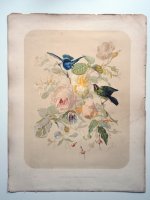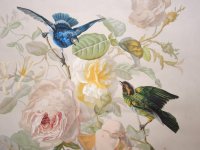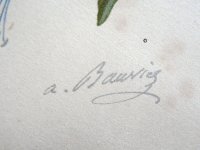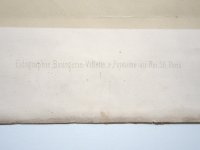A WONDERFUL DECORATIVE PROCESS.
"Eidographie " is the name given to a process invented by Professor A. F. Eckhardt, a German chemist. According to the inventor, "silken cushions", such as ladies have been accustomed to spend weeks in embroidering from designs in colored silk, are decorated elegantly by the pencil of the * eidographist ' in a few hours, and the work is done in metal, which will not wear off, as the silk of embroidery does. Instead of the expensive stained- glass windows used in churches, windows decorated by the 4 eidographie ' process can be employed, producing similar effects, and at a comparatively nominal cost. Wooden ware can be embellished by the same process, as can paper, metal, ivory, leather, wire screens, and any solid surface. The designs being in solid metal, and the brilliant coloring a compound part of the metal, the decorative work is permanently fixed, and will last as long as the material upon which it is placed." The worker in eidographie is supplied with a number of pencils containing the metal which Professor Eckhardt has compounded, and the composition of which is his secret, in a fluid form. It is said that every known color can be produced. The moment the fluid meets the air, upon issuing from the pencil, it hardens and becomes a metal, adhering so closely to the material upon which it is laid that it cannot be removed without breaking. One of the uses to which eidographie is capable of being applied is said to be the production of copper and steel plates for engraving. The design is first made by the new process, and a nega- tive is then taken. The labor of engraving is thus saved. This is all very wonderful. We hope it is true.








